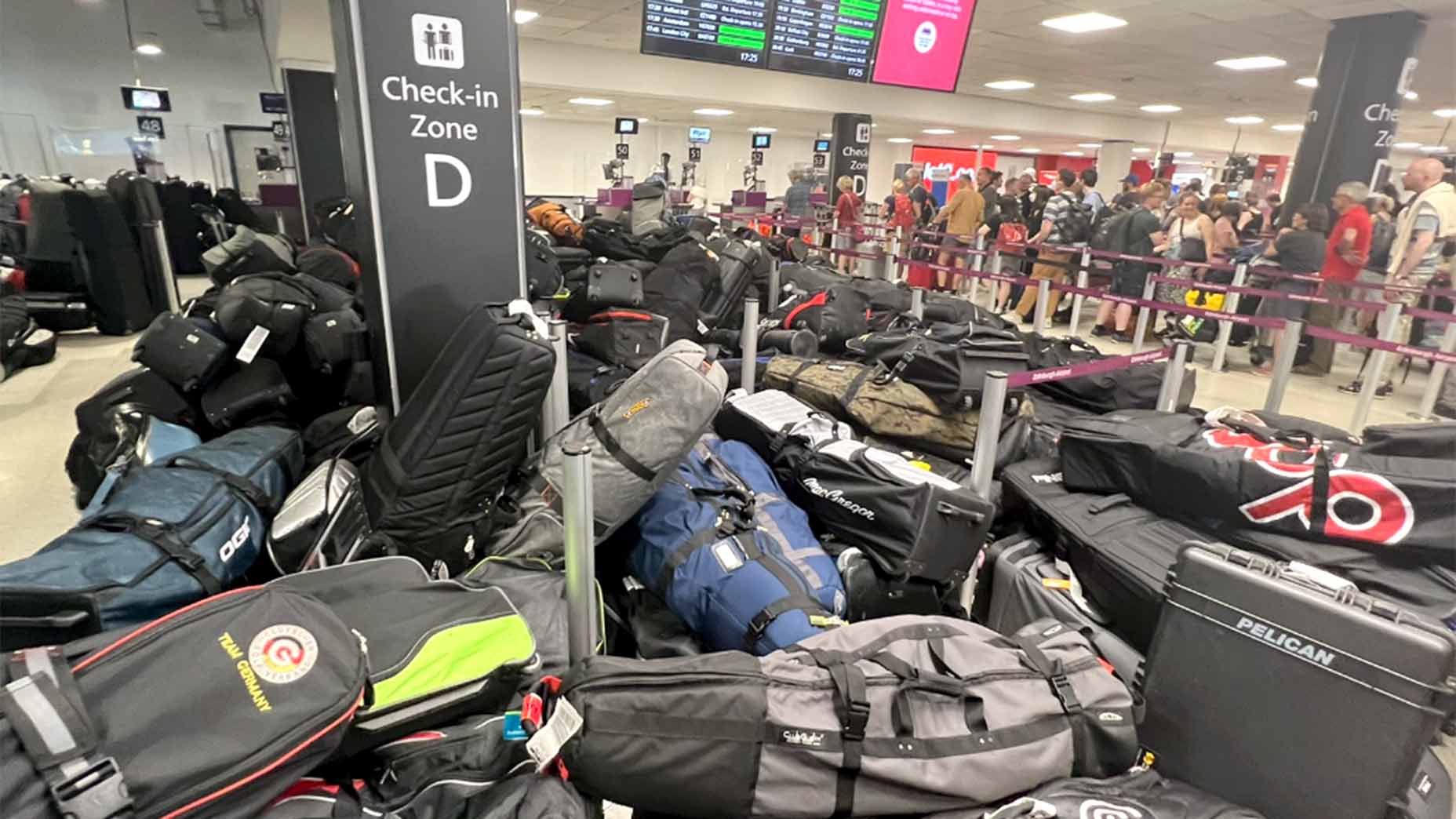Mel Reid shared some breaking news on social media a few weeks ago. It involved her driver. The club had snapped in transit on a flight. Reid was not the first golfer to suffer this misfortune, and she won’t be the last, because traveling with clubs comes with risks, costs and headaches. That in mind, here are 5 things to know before you put your sticks on a plane.
1. Read the fine print
Most airlines treat golf clubs as standard luggage, meaning there’s a weight limit (usually 50 pounds) but no oversize baggage fee. If your clubs go missing, the carrier will replace them (just be prepared to deal with paperwork and, in all likelihood, long hold times on calls should you need additional assistance).
6 excellent golf club travel bags you can trust for tripsBy: Nick Piastowski
Damage is another matter. Not all airlines compensate for it. Nor do they allow you to pack just anything in your golf bag. Under its current policies, for instance, American Airlines permits clubs, balls, tees and one pair of golf shoes. If you’re thinking of being sneaky, think again, as you might be asked to open your bag at the airport. If you’ve packed anything beyond the approved items, fees will apply.
Because policies can vary, pay attention to the fine print. It’s not riveting reading (if that’s what you’re after, try the safety instructions in the seat-back pocket), but it will help protect you from an unpleasant surprise.
2. Fly direct
It’s hard to say which is more frustrating: missing your connection, or making it to your destination without a hitch only to find that your clubs didn’t. The best way to avoid both of these risks is to take a direct flight, if you’ve got that option. It will almost certainly cost more. But paying extra can save you all kinds of headaches, as golf clubs are among the most likely items to be left behind on a tight connection, especially on a small regional flight.
3. There are some things money can’t buy
With rare exceptions, every club in your bag can be replaced. The same isn’t true of souvenirs with sentimental value. A lucky coin. A vintage head cover. A filled-in scorecard from a round you played on a bucket-list course. If you’re traveling with a golf item you couldn’t stand to lose, keep it with you in your carry-on luggage instead.
4. You can take protective measures
When it comes to safeguarding your sticks from airline damage, a high-quality travel bag is your first and best line of defense. But there are many other simple, protective steps. A stiff-arm, for instance, adds vertical strength to a travel bag, protecting your clubs from all kinds of stress. In the absence of the real thing, a sturdy broomstick or telescoping ski pole can serve as a stand in.
Or, if you really want to go the MacGyver route, get a standard bucket (the kind you use when you mop the bathroom will do) and place it as a shield over the top of your clubs before you zip them up inside your travel bag. Yet another option is to turn your clubs upside in the bag, the better to protect the club heads, though that’s easier done with irons than it is with drivers and fairway metals.
Speaking of those clubs, not only are many of the heads adjustable these days but they are also removable. If you’ve got the time and inclination, you could always remove them before your trip and stash them in your carry-on.
5. You could always ship them
Capitalism isn’t perfect, but it does create a wealth of consumer options. Instead of entrusting your clubs to an airline, you could always ship them to your destination. A number of companies provide this service, along with a guarantee that your clubs will be there waiting for you, without a scratch on them. Depending on where you’re going and how fast you need your clubs to get there, those services might be cheaper than an airline baggage fee.











